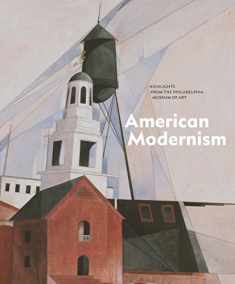
Cult of the Machine: Precisionism and American Art
ISBN-13:
9780300234022
ISBN-10:
0300234023
Edition:
First Edition
Author:
Emma Acker, Adrian Daub, Sue Canterbury, Lauren Palmor
Publication date:
2018
Publisher:
Yale University Press
Format:
Hardcover
244 pages
Category:
Criticism
,
Arts History & Criticism
,
History
,
World History
FREE US shipping
Book details
ISBN-13:
9780300234022
ISBN-10:
0300234023
Edition:
First Edition
Author:
Emma Acker, Adrian Daub, Sue Canterbury, Lauren Palmor
Publication date:
2018
Publisher:
Yale University Press
Format:
Hardcover
244 pages
Category:
Criticism
,
Arts History & Criticism
,
History
,
World History
Summary
Cult of the Machine: Precisionism and American Art (ISBN-13: 9780300234022 and ISBN-10: 0300234023), written by authors
Emma Acker, Adrian Daub, Sue Canterbury, Lauren Palmor, was published by Yale University Press in 2018.
With an overall rating of 4.2 stars, it's a notable title among other
Criticism
(Arts History & Criticism, History, World History) books. You can easily purchase or rent Cult of the Machine: Precisionism and American Art (Hardcover) from BooksRun,
along with many other new and used
Criticism
books
and textbooks.
And, if you're looking to sell your copy, our current buyback offer is $4.02.
Description
A fresh look at a bold and dynamic 20th-century American art style
Characterized by highly structured, geometric compositions with smooth surfaces, linear qualities, and lucid forms, Precisionism fully emerged after World War I and flourished in the 1920s and 1930s. This insightful publication, featuring more than 100 masterworks by artists such as Charles Sheeler, Georgia O’Keeffe, and Charles Demuth, sheds new light on the Precisionist aesthetic and the intellectual concerns, excitement, tensions, and ambivalences about industrialization that helped develop this important strand of early American modernism.
Essays explore the origins of the style—which reconciled realism with abstraction and adapted European art movements like Purism, Cubism, and Futurism to American subject matter—as well as its relationship to photography, and the ways in which it reflected the economic and social changes brought about by industrialization and technology in the post–World War I world. In addition to making a meaningful contribution to the resurging interest in Modernism and its revisionist narratives, this book offers copious connections between the past and our present day, poised on the verge of a fourth industrial revolution.
Characterized by highly structured, geometric compositions with smooth surfaces, linear qualities, and lucid forms, Precisionism fully emerged after World War I and flourished in the 1920s and 1930s. This insightful publication, featuring more than 100 masterworks by artists such as Charles Sheeler, Georgia O’Keeffe, and Charles Demuth, sheds new light on the Precisionist aesthetic and the intellectual concerns, excitement, tensions, and ambivalences about industrialization that helped develop this important strand of early American modernism.
Essays explore the origins of the style—which reconciled realism with abstraction and adapted European art movements like Purism, Cubism, and Futurism to American subject matter—as well as its relationship to photography, and the ways in which it reflected the economic and social changes brought about by industrialization and technology in the post–World War I world. In addition to making a meaningful contribution to the resurging interest in Modernism and its revisionist narratives, this book offers copious connections between the past and our present day, poised on the verge of a fourth industrial revolution.


We would LOVE it if you could help us and other readers by reviewing the book
Book review

Congratulations! We have received your book review.
{user}
{createdAt}
by {truncated_author}




